Imagine owning a mini leopard that not only captivates you with its striking appearance but also engages you in conversation. No, we’re not talking about venturing into the wild; we’re talking about sharing your home with a Bengal cat, a breed known for its vocalizations.
Bengal noises range from meows and purrs to more unique sounds like chirps and chatters, making them one of the more vocal cat breeds out there. But what exactly influences their need to express themselves in such a variety of sounds?
Bengals are indeed vocal cats, but the extent of their vocalizations can vary widely among individuals. Some Bengals will hold entire conversations with their humans with a variety of sounds, while others might be more on the quieter side.
This variation isn’t necessarily related to their wild roots but more to their domestic lineage. What’s fascinating is that the vocal habits of Bengal cats can often be understood even before you bring one into your home, by learning about their parents’ tendencies from the breeder.
The talkative nature of Bengal cats is not just to fill the silence; it’s their way of interacting with their environment. Whether they’re commenting on their day, arguing about their meal timing, or simply greeting you at the door, each Bengal cat has a unique vocal pattern.
Understanding this pattern and the factors that influence it can greatly enhance the bond between you and your mini leopard companion.
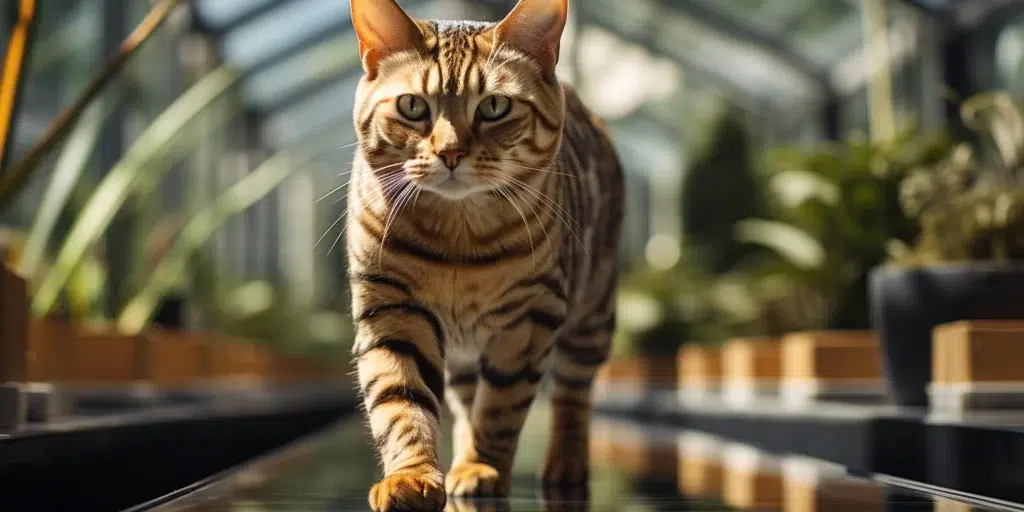
Are Bengal Cats Vocal Cats?
Yes, Bengal cats are vocal cats. However, the degree of their vocalness can vary. Some Bengals are chatty catties, ready to engage in a back-and-forth comical conversation with their humans, while others might voice their opinions only when it’s mealtime or when they have something important to say.
Interestingly, a Bengal’s activity level can also impact how vocal they are. Active Bengals, which is most of them given their energetic nature, may chatter less simply because they’re too busy exploring, playing, or engaging in physical activities.
On the flip side, a less stimulated Bengal might use their voice more to express boredom or demand attention. Therefore, ensuring your Bengal has ample exercise opportunities could influence not just their health and happiness but also their chattiness!
Factors That Influence Bengal Cat Noise Levels
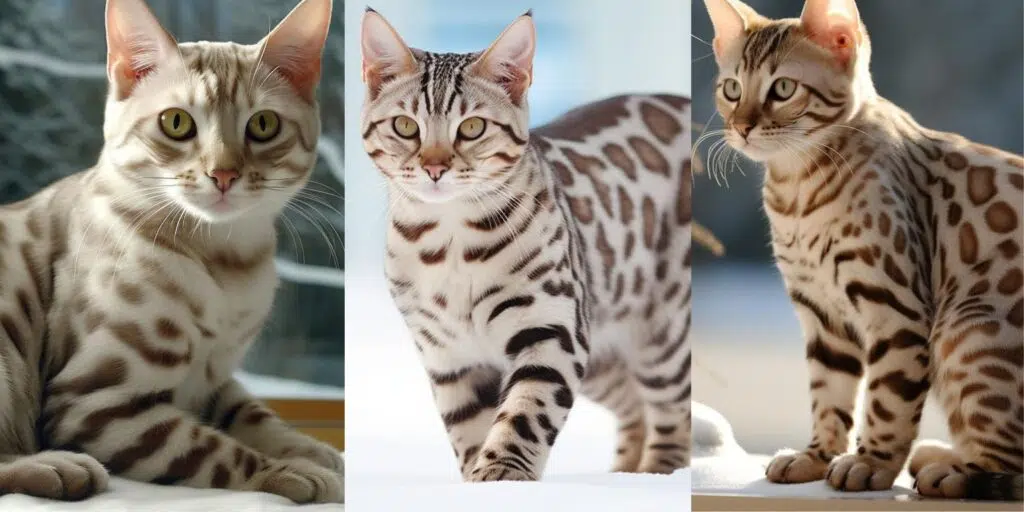
Their Age
Younger Bengal cats tend to be more vocal. Kittens use their voices to communicate their needs, from hunger to the desire for playtime. As they grow into adolescence, their vocalizations may increase as they test their boundaries and communicate more assertively.
That said, as Bengals mature, their vocalization patterns solidify, often becoming less about experimentation and more about established communication with their human companions.
Knowing this age-related progression can help owners adjust their interactions and support their Bengals’ needs at different life stages.
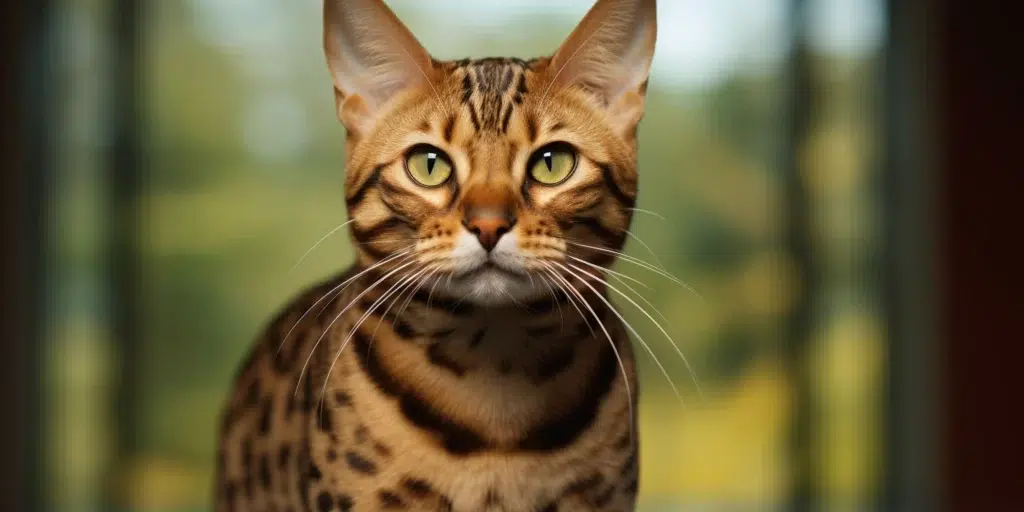
Feeding Bengal Cats and Its Relation to Noise Levels
Mealtime is a concert for most Bengal cats. Their anticipation or eagerness to eat often comes with vocal performances – meows, chirps, or even an impatient yowl. Their vocal level during these times can be influenced by their feeding schedule and habits.
Frequent, smaller meals might reduce the volume and frequency of their mealtime calls, as the predictability and satisfaction minimize their need to vocalize demands.
Conversely, unpredictable feeding times might turn up the volume on their vocalizations, as they communicate hunger or impatience more vocally.
Bengal Cat Exercise Level affects Their Noise Levels
An active Bengal is a quieter Bengal, at least in terms of incessant meowing or vocal demands. Exercise not only consumes their energy but satisfies their need for exploration, play, and interaction.
A well-exercised Bengal, whether through interactive play, puzzles, or runs on a cat wheel, is more likely to be content and, as a result, less vocally demanding.
Therefore, providing ample physical and mental stimulation is a key strategy in managing your Bengal’s noise levels.
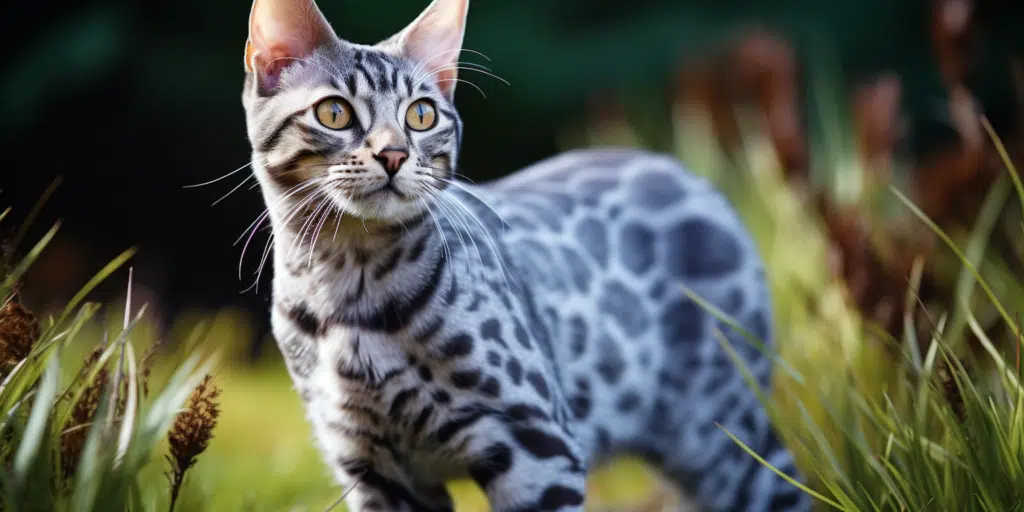
Medical conditions
Sometimes, the reason behind a Bengal cat’s increased vocalization might not be behavioral but medical. Conditions like hyperthyroidism, high blood pressure, or pain can cause your Bengal to be more vocal.
It’s their way of telling you something isn’t right. Regular check-ups and being attentive to any changes in their vocalization patterns could help in identifying and addressing medical issues early, ensuring your Bengal stays healthy and happy.
Bengal Cat Noises and Their Meaning
Understanding the variety of noises Bengal cats make can enhance your communication with them. Each sound, from meows to purrs, hisses, yowls, and growls, carries its own message, reflecting their mood, needs, or feelings.
Being attuned to these sounds helps in responding appropriately, strengthening the bond between you and your Bengal.
Meow (The Most Common Noise)
The meow is a Bengal’s all-purpose word, used in greetings, requests for food, or seeking attention. Its tone, length, and pitch can vary, giving you clues about their state of mind or immediate needs.
Engaging with them when they meow, either through conversation or action, can be a rewarding way to deepen your connection.
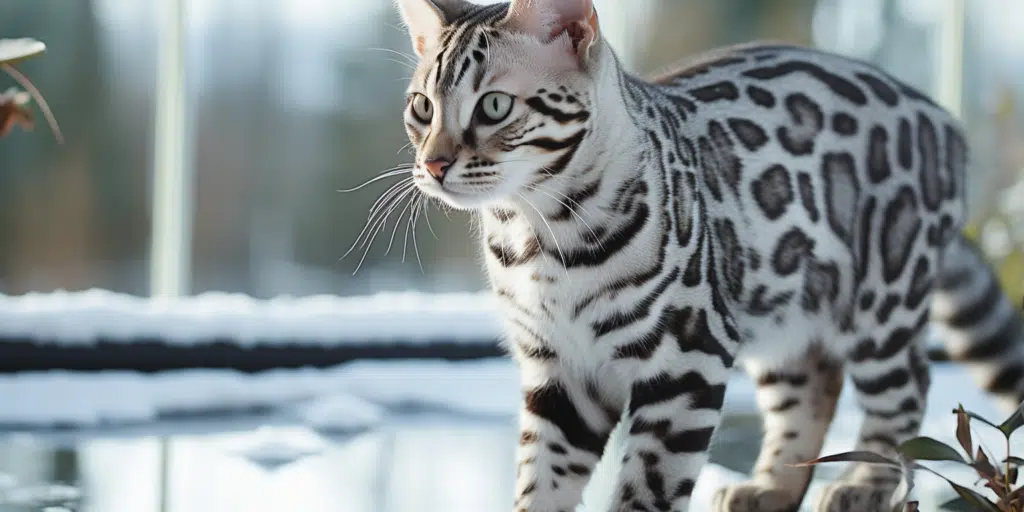
Purring (The Most Enjoyable Cat Noise)
Purring is the sound of contentment. When your Bengal purrs, it’s a sign they’re happy and comfortable, either when being petted, relaxing, or even while eating.
This soothing sound isn’t just enjoyable for them but has been shown to have calming effects on humans too.
Hissing (Your Cat Feels In Danger)
A hiss is a clear indicator your Bengal feels threatened or scared. It’s a defensive sound, meant to ward off whatever is causing them discomfort.
Understanding and respecting their need for space or security when they hiss is crucial in managing these situations peacefully.
Yowl (Not a Happy Meow)
A yowl is a longer, more drawn-out sound that often signals distress, loneliness, or frustration. If your Bengal is yowling, it’s essential to check for any immediate issues or consider if they need more companionship or stimulation.
Growls (Not as Scary as a Tiger)
Growling in Bengals can seem dramatic, but it’s typically a warning sign. They might growl to express displeasure or when they’re feeling defensive. Recognizing and respecting their boundaries when they growl can help avoid escalation.

Some Cats are More Talkative Than Others
Within the Bengal breed, you’ll find a range of vocal personalities. Some Bengals might narrate their day in a symphony of sounds while others prefer a more stoic approach to communication. Much of this variability is down to genetics and individual temperament.
Engaging with your Bengal and encouraging communication can enrich your relationship, regardless of their natural vocal tendencies.
How to make Bengal Cats less vocal?
Reducing unnecessary vocalization in Bengals involves meeting their needs for interaction, stimulation, and routine. Regular playtimes, consistent feeding schedules, and addressing any medical issues can all contribute to a more content and thus quieter Bengal.
Contrary to wanting to immediately comfort your cat when they meow, sometimes ignoring the behavior is more beneficial. If you’ve ruled out any underlying medical issues and ensured that their needs are met, then not responding to their meowing can help break the habit of vocalizing for attention.
This might be challenging, especially during the night, but consistency is key. Using earplugs can help you get through the night without reinforcing the meowing by giving in.
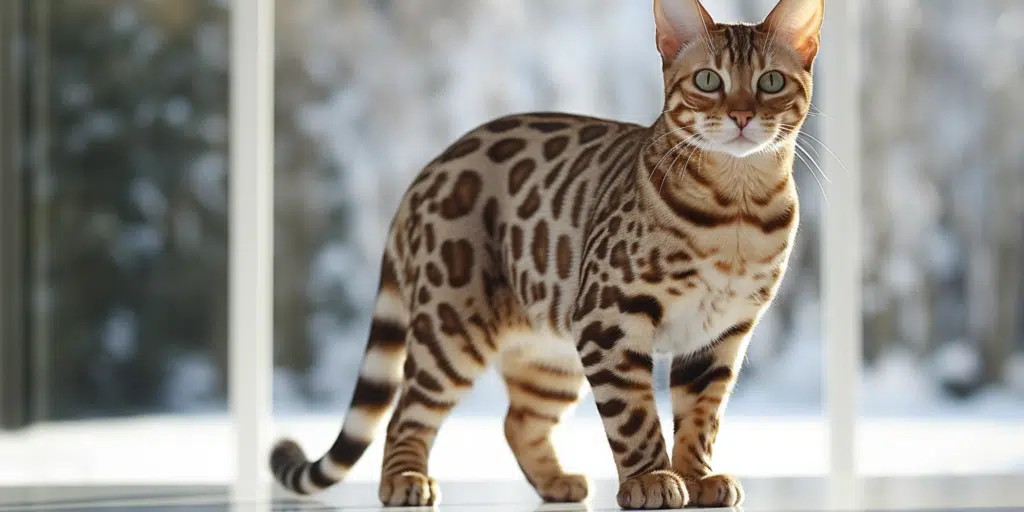
Conclusion
Bengal cats are indeed vocal. Understanding the factors that influence their vocalization and what different noises mean can greatly improve your relationship with them. By responding to their attempts to communicate, you can further enhance this bond.
Giving them plenty of mental and physical stimulation, and keeping to a routine, will allow you to truly appreciate the wide range of sounds they make. From conversational meows to contented purrs, you’ll be able to enjoy this rich tapestry of sounds, all while ensuring they stay happy and healthy members of your family.